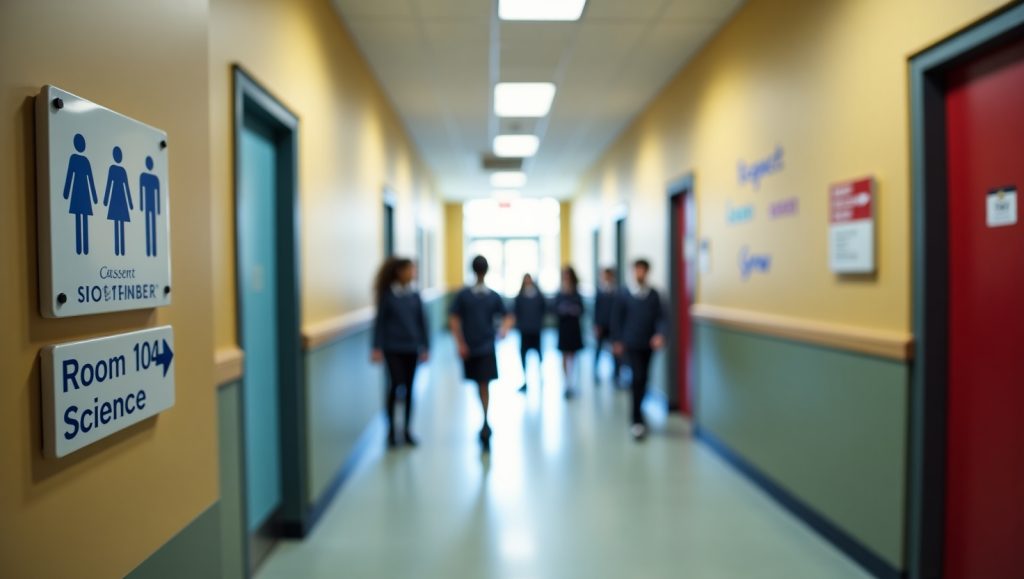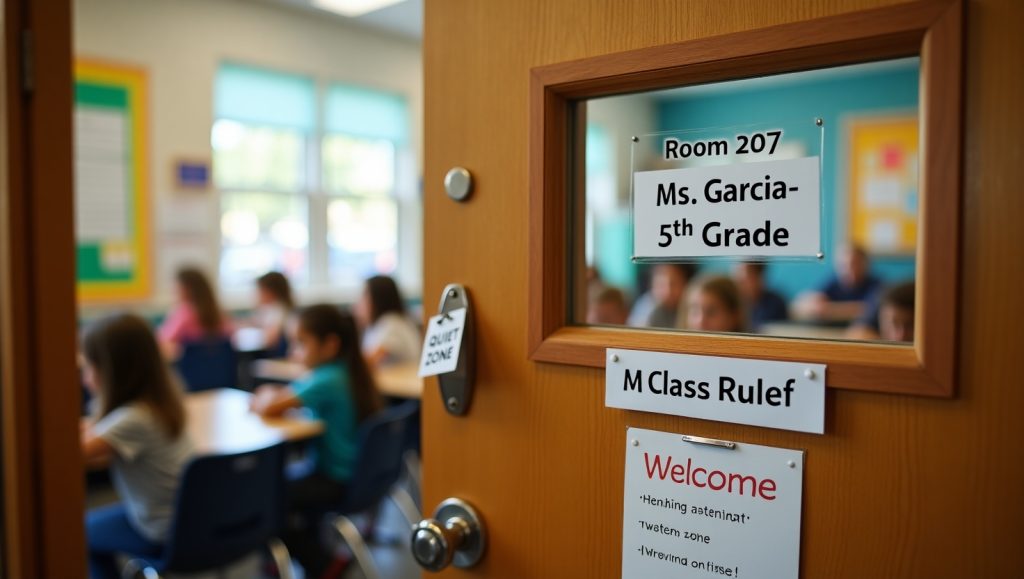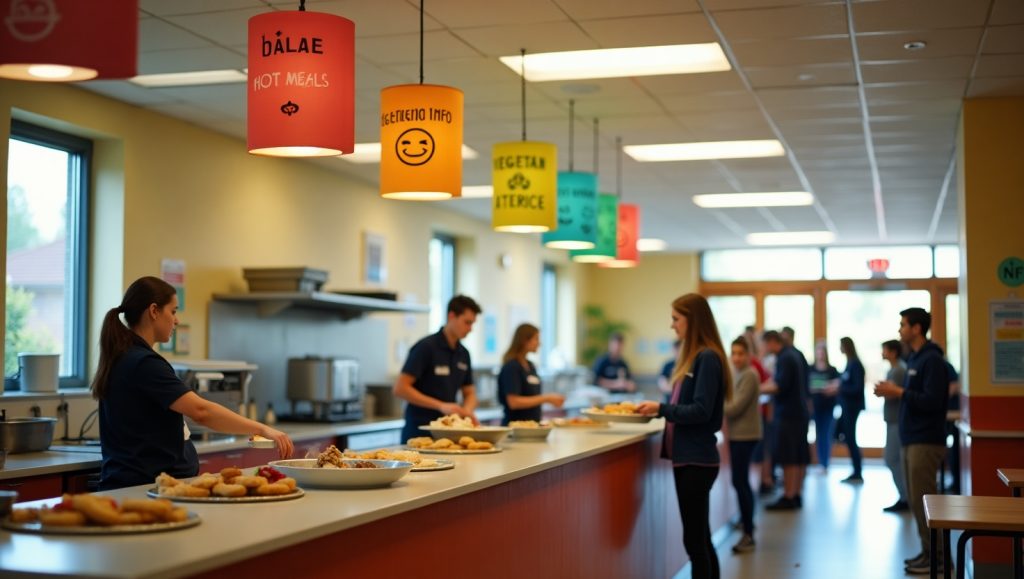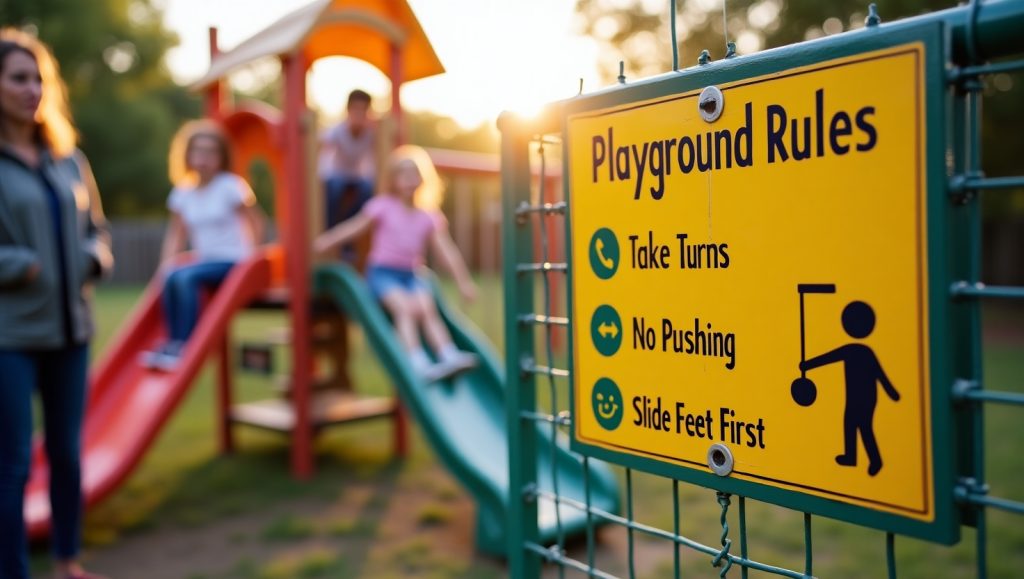Did you know there are 9,653 schools in Australia, and the number of school-going students increases by 1.1% yearly? Well, managing a school is no small task. Keeping everything organised may be overwhelming with students, staff, and visitors constantly moving around.
You need clear, effective types of school signage to ensure safety, smooth navigation, and compliance with regulations. Different types of school signs include:
- Wayfinding signage
- Directional sign
- Informational signage
- Regulatory signs
- Safety signs
- ADA-compliant signage
- Monument signs
- Classroom identification signs
- Restroom signs
- Parking lot signage
- Health and Safety Signage
In this guide, we will discuss all these signs and their advantages. After this, you can decide to implement all these signs in the right places.
11 Types of School Signage to Increase School Safety and Functionality
Here are the different types of signs that schools use as efficient types of school signage for various purposes.

1. Wayfinding Signage
Have you ever noticed that new students and visitors to your school frequently get lost on campus? Well, your school can be large, and the ways to different places can be complicated.
Wayfinding signage helps find the way without any strain. Wayfinding signage includes maps, arrows, and labelled pathways that guide movement across the school.
You can use these signs to help people find cafeterias, classrooms, offices, and other key locations.
- Standard Materials: Aluminum, acrylic, PVC, and vinyl.
- Placement: Entrances, hallways, stairwells, and intersections.
Advantages:
- These signs reduce confusion, especially for new students, parents, and visitors.
- They make larger school campuses easier to navigate.
2. Disable-Compliant Signs (ADA Compliant Signage equivalent)
You need to make your school accessible to everyone– it is mandatory. Because under Disability Discrimination Act 1992, all public facilities, including schools, must be accessible to all, including disabled persons.
These signs ensure that students, staff, and visitors with disabilities can navigate the campus independently.
Disabled-compliant signs have directional markers with braille and high-contrast text. The signs should be 48-60 inches from the floor to be easily reached. So, you need to avoid the mistake of not implementing the disability-compliant signs in your school.
- Standard Materials: Brass or bronze, acrylic, aluminium, photopolymer, stainless steel, etc.
- Placement: Entrances and exits, classrooms, offices, restrooms, elevator and staircases, and more.
Advantages:
- These signs ensure inclusivity for all individuals on campus.
- They help schools comply with disability access laws.
- They make navigation easier for visually impaired students and visitors.

3. Directional Signs
Have you ever noticed that new students or visitors can’t understand the exact direction of the place they head to? Directional signs point them in the right direction, such as classrooms, restrooms, libraries, offices, and so on.
Directional signs are often colour-coded or numbered to match school zones, making navigation intuitive. These signs are strategically placed in busy areas to prevent congestion and ensure efficient movement.
- Standard Materials: Metal, acrylic, foam board, and adhesive vinyl.
- Placement: Hallway intersections, outside significant buildings, and near staircases.
Advantages:
- Directional signs reduce the need for staff to give directions frequently.
- They help visitors confidently navigate the school.
- They ensure smooth traffic flow during peak hours.
4. Informational Signage
Keeping everyone informed is a challenge, but informational signage makes it easier.
From daily announcements to event schedules, contact information, school hours, important dates, etc., these signs ensure no one misses essential updates.
Informational signs can be digital displays, Marquee, or only LED signs.

4.1. Digital Displays
Digital displays are typically flat screens that use electronic technologies like LED, LCD, or OLED. You can use digital displays for sign purposes by presenting images, videos, texts, and more.
You can use digital displays to provide dynamic and real-time updates and information instantly.
- Standard Materials: LED screens, LCD panels, and digital kiosks.
- Placement: Entrances, lobbies, common areas, and outdoor spaces.
Advantages:
- Digital displays are more engaging than traditional signs.
- They give you instant updates without printing new materials.
- Digital signs reduce clutter by consolidating multiple messages.
4.2. Marquee Signs
Generally placed at entrances, marquee signs welcome students and visitors while providing key information. Whether it’s a reminder about a PTA meeting or a weather alert, you can use these signs to make sure your messages are seen.
Marquee signs typically use large letters so that they can be seen from afar. They can also use LEDs for nighttime visibility.
- Standard materials: Plastic, aluminium, vinyl, wood, acrylic, LEDs, fluorescent tubes, etc.
- Placement: Entrances, building facades, outdoor spaces (roadsides, parking lots), over main doors.
Advantages
- They are evident from afar, so messages are clearly seen.
- They are durable and can be used for the long term, which is cost-effective.
4.3. LED School Signs
Want to grab attention instantly? LED school signs are bright, energy-efficient, and perfect for outdoor communication. You can display announcements, upcoming events, and emergency alerts in an obvious format.
However, it’s a version of digital signs, where only LED lighting technology is used.

5. Regulatory Signs
Sometimes, the students and staff of your school may violate school rules due to unclear instructions. But when you use regulatory signs, these help you to handle the issue perfectly by letting people know the regulations they must follow.
For example, you can point out no-smoking areas, restricted zones, and speed limits within school grounds by regulatory signs. These signs help maintain order and ensure compliance with school policies.
- Standard Materials: Aluminum, acrylic, plastic, and reflective vinyl.
- Placement: School entrances, restricted areas, and shared spaces.
Advantages:
- The regulatory signs help you to enforce discipline and order.
- They ensure compliance with legal requirements.
- They prevent unauthorised access to restricted areas by showing legal warnings.
- Regulatory signs help maintain a structured environment.
6. Safety Signs
You always need to give priority to the safe school environment. Under Australian Standard AS1319-1994, you need to implement safety signs in workplaces, including schools.
Safety signs alert students and staff of potential hazards, safety protocols, and emergency procedures. Whether it’s a “Wet Floor” warning or a first-aid location, these signs prevent accidents and improve response times.
The safety signs include:
- Prohibition signs
- Mandatory signs
- Warning signs
- Restriction signs
- Danger signs
- Emergency exit signs
- Fire signs.
- Standard Materials: Reflective vinyl, aluminum, plastic, and foam board.
- Placement: Laboratories, staircases, wet floors, and construction zones, emergency exit zones, etc.
Advantages:
- Safety signs reduce the risk of injuries and accidents.
- They reinforce safety protocols.
- These signs promote a culture of awareness and caution.

7. Monument Signs
Do you want to make a strong first impression for your school on the visitors and new students?
Monument signs are aesthetically pleasing and complement the environmental theme of any organisation (including schools), creating a strong first impression in people’s minds.
They are ground-level signs that are typically 3 to 12 feet tall.
Monument signs at the entrance help establish your school’s identity. They are durable, professional, and enhance the school’s presence in the community.
- Standard Materials: Brick, stone, concrete, etc.
- Placement: Main entrance, parking lot entrance.
Advantages:
- Monument signs provide a professional and welcoming first impression.
- They clearly mark the school’s location for new visitors.
- They are Long-lasting and durable against weather conditions.
8. Classroom Identification Signs
Nothing is more frustrating than students entering the wrong classroom in a school, right? This mostly happens for new students, teachers, and when new classes start every session.
Classroom identification signs eliminate confusion and help everyone find their assigned rooms easily.
Also, disability-compliant versions of the signs include braille and raised lettering for easy accessibility.
- Standard Materials: Acrylic, metal, plastic, and engraved nameplates.
Placement: Above or beside classroom doors.
Advantages:
- These signs help students and staff find rooms quickly.
- They reduce confusion and misplacement of students.

9. Restroom Signs
Are your restrooms clearly marked for accessibility and gender inclusion, for males and females? Finding something as simple as a restroom on a large school campus can be challenging.
Restroom signs that point out the restrooms so that students, staff, and visitors can see them quickly.
Gender-specific signs and accessible restroom markers specifically mark restroom signs for males and females.
- Standard Materials: Acrylic, plastic, metal, and braille-embossed materials.
Placement: On restroom doors and hallway intersections leading to restrooms.
Advantages:
- Restroom signs ensure students and staff can quickly find restrooms.
- They indicate accessibility for individuals with disabilities.
- These signs help maintain order and proper usage of restrooms.
10. Parking Lot Signage
Commonly, the traffic at your school gets chaotic during the pick-up time. New visitors or parents may also struggle to find the designated parking areas.
Parking lot signs in schools include speed limits for cars, directional arrows to the entrance and exit, “No Parking” zones, and designated visitor parking.
The purposes of parking lot signage are to regulate traffic flows and ensure safety in the parking areas.
- Standard Materials: Reflective aluminum, metal, and weather-resistant plastic.
- Placement: School parking lots, drop-off zones, and restricted parking areas.
Advantages:
- Parking lot signs prevent parking congestion and confusion.
- They increase pedestrian safety, especially during drop-off and pick-up times.
- They designate reserved parking for staff, visitors, and disabled individuals, which helps to avoid confusion in the parking lot.

11. Health and Safety Signage
Do your school’s students, staff, and visitors follow proper hygiene and emergency procedures? If not, you can make this happen by motivating them by implementing health and safety signs.
You need to keep students, staff, and visitors updated about hygiene, first aid location, and other health safety aspects. Health and safety signage plays a vital role in student well-being.
These signs promote handwashing, social distancing, and emergency contacts, which help to create a healthier social environment.
Under the Work Health and Safety Act 2011, you need to protect and keep informed all the students, staff, and visitors of your school, following the model of Safe Work Australia.
- Standard Materials: Vinyl, acrylic, plastic, and laminated posters.
- Placement: Health offices, cafeterias, hallways, restroom intersections, and classrooms.
Final Thoughts
Having the right types of school signage is about more than just aesthetics. It’s about keeping your school safe, organised, and accessible. Whether it’s guiding students, preventing accidents, or ensuring compliance, well-placed signage makes your job easier and improves the overall school experience.
If your school needs new or upgraded signage, a professional provider can help. At Signage 4Business Group, we offer all types of school signage, strategically installing them based on your school’s layout and requirements.
We’re here to assist with expert signage installation and consultation across Brisbane, the Gold Coast, and the Sunshine Coast. Contact us today for high-quality service customised to your needs, ensuring your school remains safe, functional, and welcoming